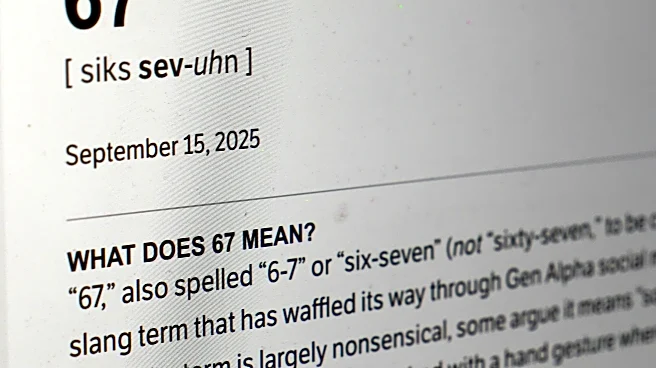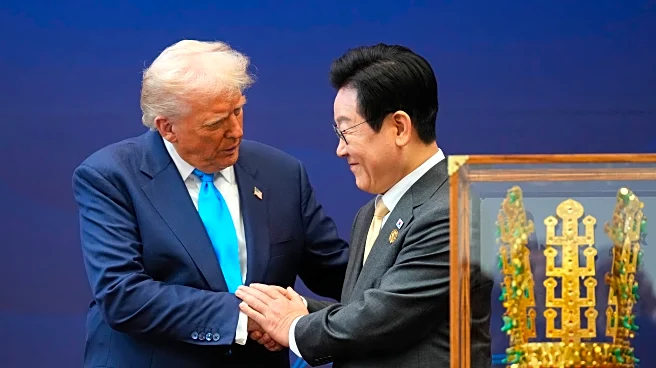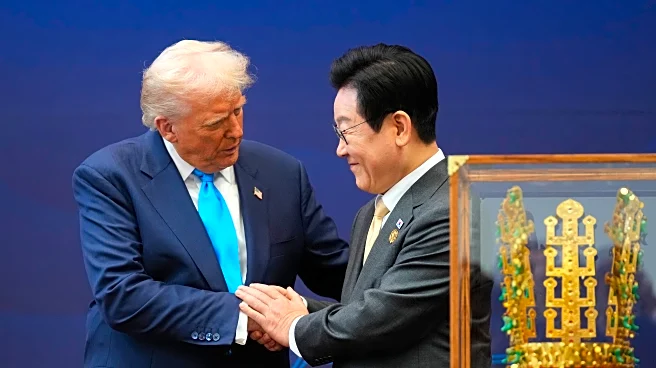What's Happening?
Dictionary.com has selected '67' as its 2025 word of the year, a term that has gained significant traction across social media and popular culture. Originating from the song 'Doot Doot (6 7)' by Philadelphia-based
rapper Skrilla, the term '67' has been widely adopted by Generation Alpha, often used in a playful manner without a specific definition. The term gained popularity through viral TikToks and was further popularized by basketball players like LaMelo Ball, who stands 6 feet 7 inches tall. Despite its widespread use, '67' remains undefined, serving more as a cultural phenomenon than a word with a concrete meaning.
Why It's Important?
The selection of '67' as the word of the year highlights the evolving nature of language in the digital age, where terms can gain rapid popularity through social media and cultural references. This phenomenon underscores the influence of Generation Alpha in shaping contemporary vernacular and reflects the broader trend of language being driven by online interactions. The term's rise also illustrates how language can serve as a tool for connection among younger generations, providing a shared cultural reference point that transcends traditional definitions.
What's Next?
As '67' continues to permeate popular culture, it may face the typical lifecycle of viral trends, potentially losing its appeal as it becomes more mainstream. However, its current status as a cultural touchstone suggests it may persist in some form, particularly within educational settings and among younger demographics. The ongoing use of '67' could inspire further linguistic innovations and serve as a case study in how digital culture influences language development.
Beyond the Headlines
The phenomenon of '67' raises questions about the nature of language and meaning in an era dominated by digital communication. It challenges traditional notions of linguistic significance, suggesting that the emotional and social connections fostered by language can be as important as its literal meaning. This trend may prompt educators and linguists to reconsider how language is taught and understood in a rapidly changing cultural landscape.












